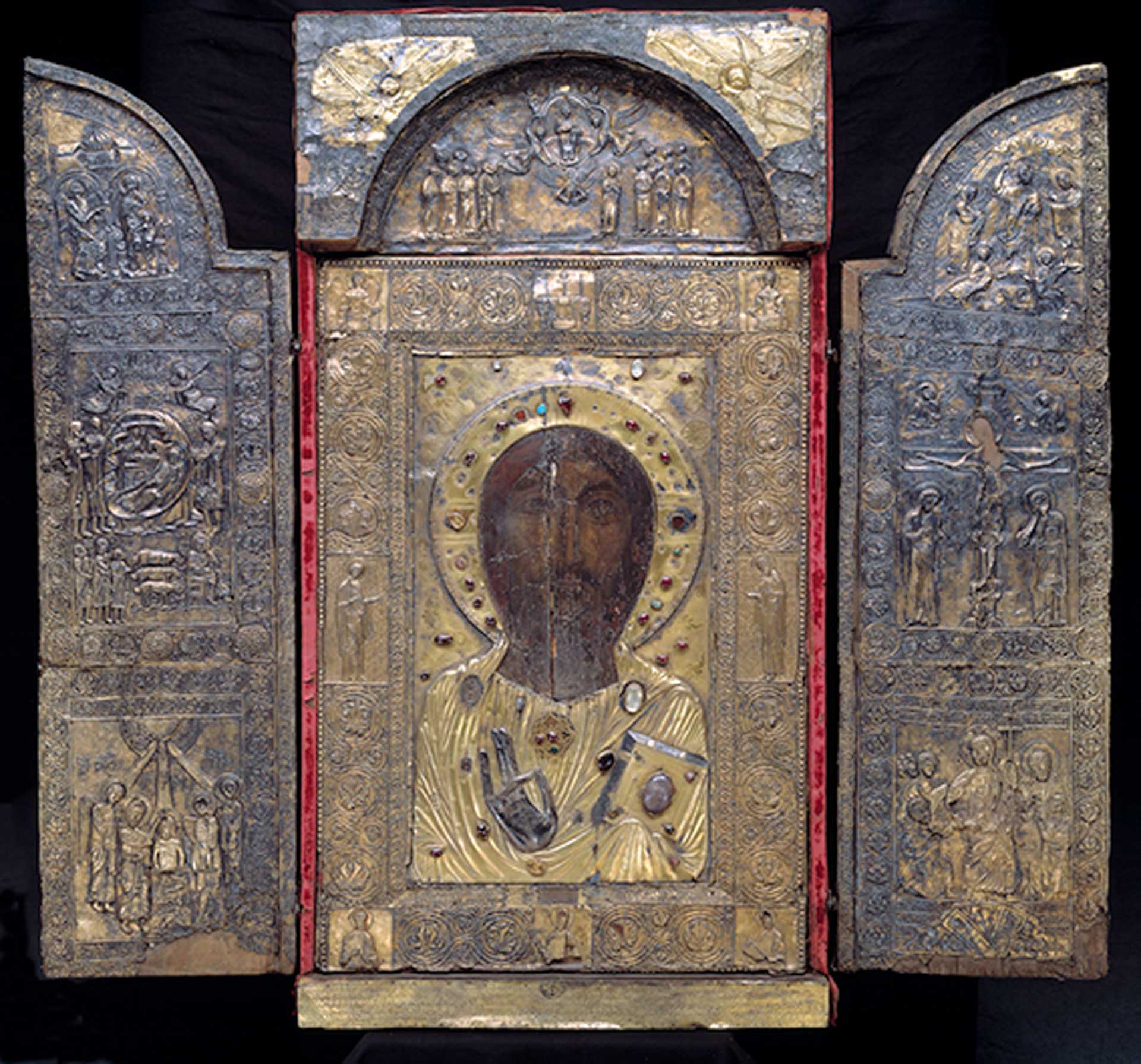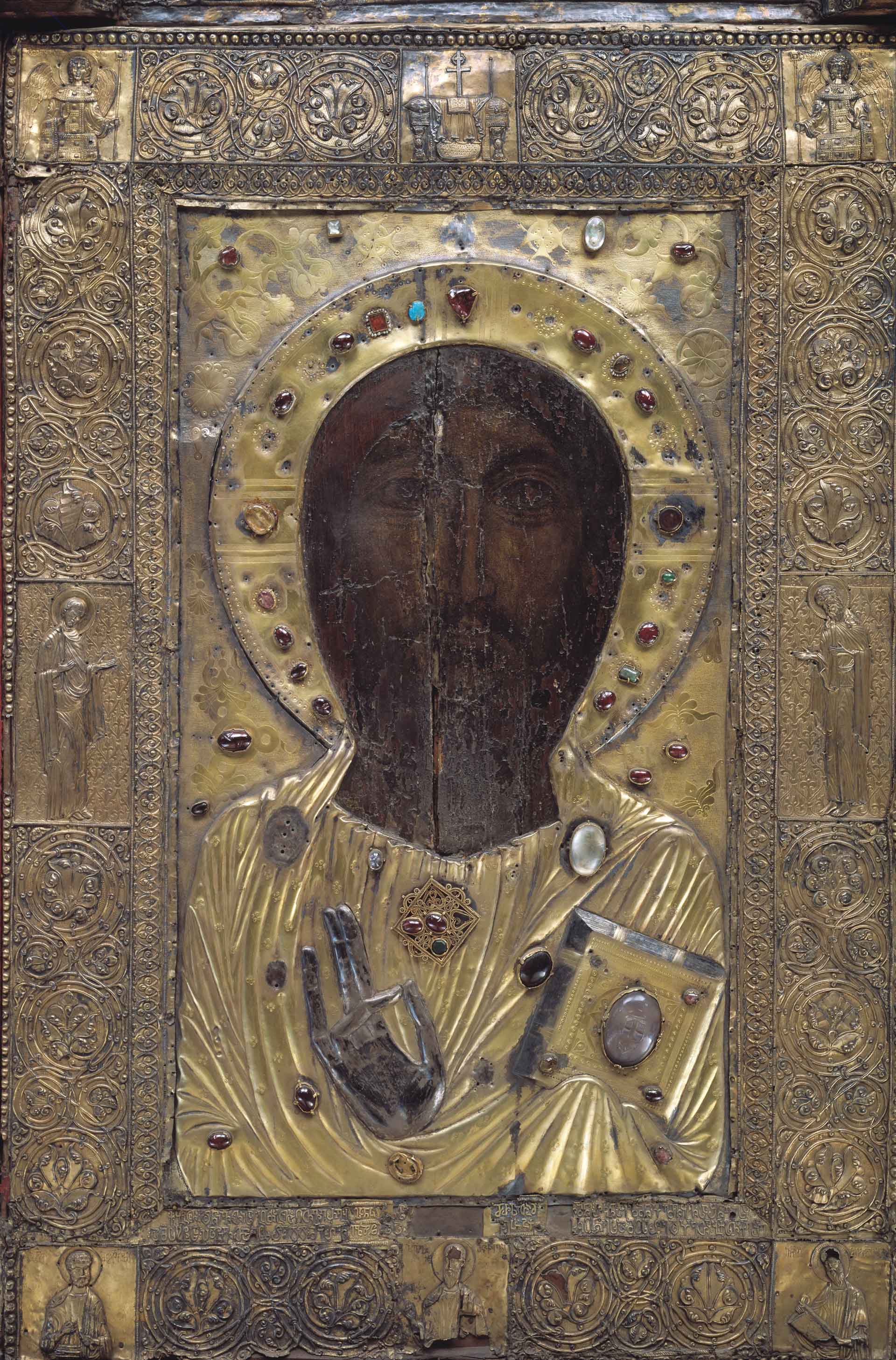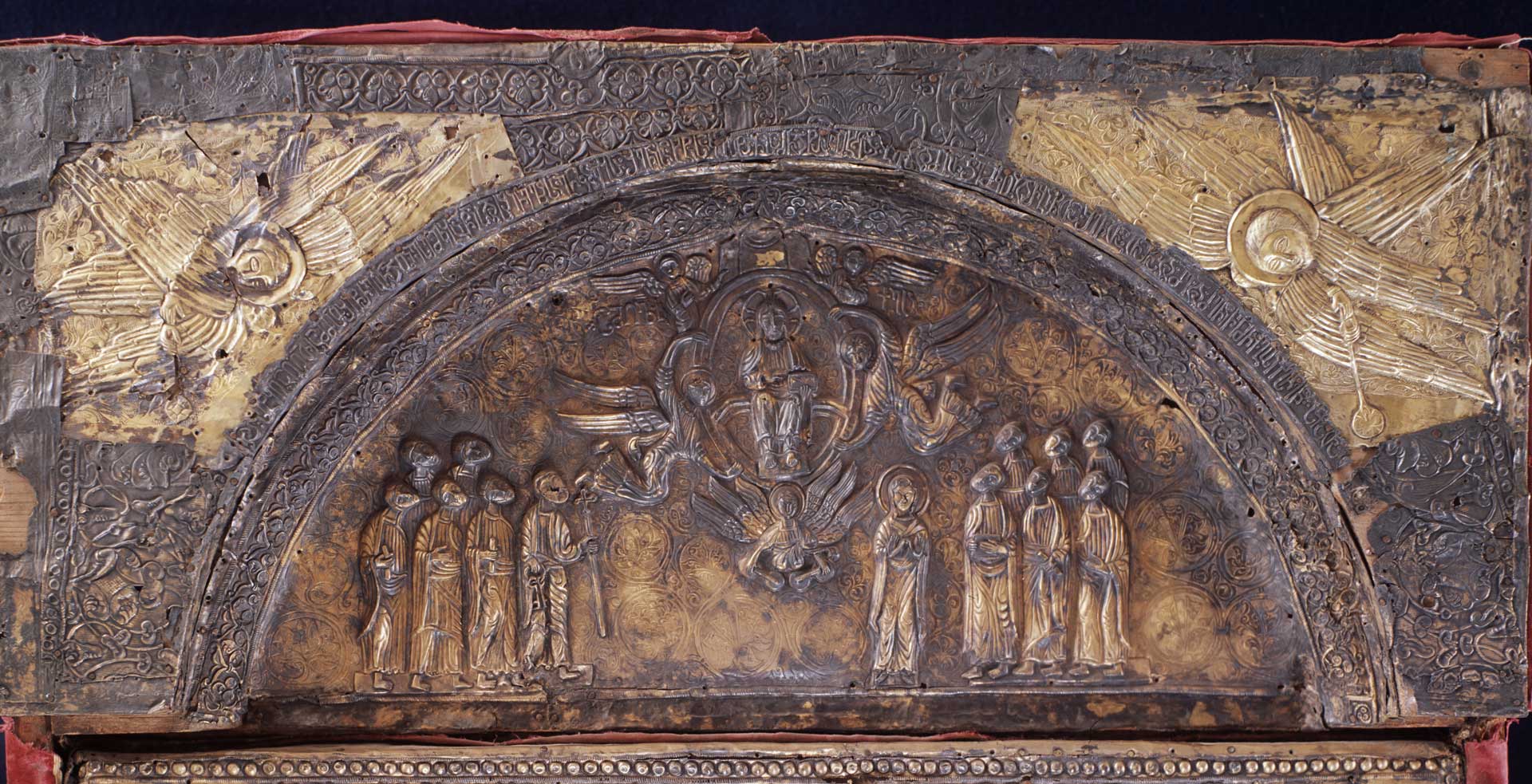
Feel free to add tags, names, dates or anything you are looking for


The icon of ancha or anchiskhati, a replica of the holy face of edessa the image of christ not made by human hand, is one of the major relics of the georgian church. This is the earliest preserved copy of the image of christ, which according to christian tradition was miraculously imprinted on cloth during his earthly life. The mandylion is directly connected with orthodox christian teaching, proving the real incarnation of christ. Moreover, the image not made by human hand is also perceived as a legitimation of christian images. During the iconoclastic controversy, the mandylion was one of the most important arguments for the iconophiles (those who venerated images), who claimed the legitimacy of images for the christian church.

Anchiskhati Triptych. 6th c. 12th c. 14th c. 17th c. 19th c. The Shalva Amiranashvili Museum of Fine Arts, Tbilisi, Georgia

Anchiskhati (Icon of Ancha)
Anchiskhati is a complex icon made up of parts from various historical periods: the painted image is traditionally attributed to the sixth and seventh centuries, while its precious metal frame was added between 1284-1307. A repousse inscription executed in the old georgian uncial script asomtavruli states that ioanne rkinaeli, the bishop of ancha, adorned the icon by order of queen tamar and with her donations.
 Inscription of Lower frame
Inscription of Lower frame
The repoussé frame has vine-scroll foliate ornamentation with inserted holy images. The central part of the upper frame contains a depiction of the Preparation of the Throne, accompanied by half-figures of frontal Archangels depicted in the corners.
 Upper frame
Upper frame
On the vertical frames, the Virgin and St. John the Baptist are represented in full-length. They are in attitude of prayer, and slightly turned towards the central image of Christ. The lower frame bears half-figures of St. Peter, St. Paul and St. John the Evangelist.

The Virgin and St. John the Baptist. Vertical frames
From the inscription we know that the frame was created by Beka of Opiza (Opizari in Georgian). His name indicates that he belonged to the famous monastic workshop at Opiza Monastery, which was the significant religious and artistic center of Klarjeti (historical south-western region of Georgia, now in modern day Turkey).
Later, in about 1308-1334, a special triptych case was created for the venerable image, donated by the powerful aristocratic family of Jakeli, governors of the south-western province of Samtskhe. The inner parts of the lateral wings depict seven scenes from the Great Twelve Feasts executed in repoussé. The Ascension adorns the semi-circular top; the Annunciation, Nativity and Baptism are placed on the left wing; and the Transfiguration, Crucifixion and Anastasis on the right.

The Ascension and Angels upper part of the Central Part of Anchiskhi triptych. 14 th c. 17th c.
The reverses of the wings were riveted in the seventeenth century, while in the eighteenth century the icon setting was renewed and precious stones were added. The repoussé figure of Christ is a work from the nineteenth century.
Unfortunately, the history of the Ancha icon before Bishop Ioane’s embellishment is quite obscure, but it is significant that during the reign of Queen Tamar, when the Georgian Kingdom reached its apex, the image gained a particular importance, and significant steps were made for the promotion of its cult. Along with commissioning the precious repoussé frame of the image, Ioane Bishop of Ancha also composed a hymn of Anchiskhati. Ancha was an important monastery in Georgia that was established in the late 9th century (in Klarjeti). The monastery and its monks held great authority, and it may be assumed that possession of the important sacred relic increased the house’s prestige.
Apart from being one of the main relics of the entire Christendom, the Holy face of Edessa has a special meaning for Georgians. Advancement of the cult of the Mandylion is embedded in local tradition. Veneration of the Holy Face of Edessa has a long history in Georgia - according to church tradition the image is linked to the Apostle Andrew, who preached in the southern lands of Georgia in the 1st century. Another version claims that Anchiskhati is the Keramidion – a tile with a miraculously imprinted Mandylion that was brought to Georgia by Anton of Martkopi, one of the so-called 13 Syrian fathers, who in the sixth century introduced Eastern Christian monasticism in Georgia.
The diverse historical layers of the Anchiskhati triptych reflect the Ancha image’s focal role in the religious life of the country throughout the centuries. The icon was the subject of special Royal and aristocratic patronage. Each part added to the original fabric of the icon aims to enhance the interpretation of the sacred relic, and to extend its grace to the benefactors who commissioned new decorations for the icon.
From 1675 the icon was kept in one of the oldest churches of Tbilisi, which is named Anchiskhati after the icon. The icon is currently housed in the treasury of the Museum of Fine Arts, Tbilisi.